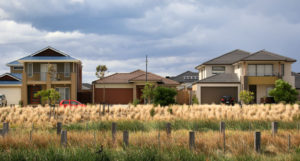Affluent, culturally diverse suburbs on the rise
 Australian cities are seeing the rise of new highly ethnically diverse suburbs populated by professional migrants and entrepreneurs, according to new research.
Australian cities are seeing the rise of new highly ethnically diverse suburbs populated by professional migrants and entrepreneurs, according to new research.
These so-called ‘super-diverse ethnoburbs’ are the result of Australia’s skilled migration scheme that, since the 1990s, has brought a new cohort of migrants into the country who have higher educational qualifications and economic capabilities than previous migrants.
These countries come from affluent as well as economically disadvantaged countries around the world, the research says.
Deakin University researcher Shilpi Tewari says this influx of professionals and educated migrants “has given rise to different and distinct residential settlement patterns in all major cities, including Sydney, Melbourne, Brisbane and Adelaide”.
“As a result, many suburbs in these cities have become demographically multicultural,” Ms Tewari said.
She said notable examples included Point Cook and Caroline Springs in Melbourne, Redfern and Ashwood in Sydney, Sunnybank in Brisbane and Ferriden Park in Adelaide.
“Melbourne and Victoria are the city and state with the fastest population growth. A more detailed analysis of demographic changes in suburbs of Melbourne demonstrates a new urban phenomenon in migrant settlement patterns. Higher-income professional migrants of higher socioeconomic status now tend to live close to each other in the suburbs, rather than in more traditional migrant settlement areas,” Ms Mewari said.
“The result of this shift in settlement patterns is suburbs with large migrant populations of diverse ethnic origins. We have called these ‘super-diverse ethnoburbs’,” she said.
“For example, new migrants have increasingly chosen to settle in outer suburban locations of Melbourne. They, like many other home buyers, see the outer suburbs as more affordable than inner-city areas where property prices have skyrocketed in recent years.
“Secondly, these new migrants seem to find greater satisfaction in living in more private and physically separated environments. Here they are surrounded by people of similar socio-economic status and they and their families feel more secure.
“This trend is giving rise to suburbs which have professional middle-class young families living within master-planned estates. Point Cook, Tarneit, Craigieburn, Caroline Springs and Glen Waverley are examples of such suburbs in Melbourne,” Ms Tewari said.
The Australian research follows the reporting of a similar demographic phenomenon in the US.
But Australian ‘ethnoburbs’ appear less homogenous than their US counterparts with many different ethnic groups co-existing, even though a few cultural groups are much larger than others.
The researchers analysed demographic data for Point Cook in Melbourne.
They found the most common countries of origin are England, New Zealand, China, India and Philippines, although the suburb is home to people from 160 different ethnic backgrounds.
“While the population in Point Cook comes from many different countries, they are all mostly professionals and managers with high educational qualifications and economic status,” the researchers said.
“This means Point Cook is super-diverse in an ethnic/cultural sense but not in an economic/class sense. Point Cook has more high-income earners than the average for Victoria and Australia.
“Nevertheless, combining the theories of ethnoburbs and the concept of super-diversity and applying them to the outer suburbs of major cities of Australia, a new phenomenon is evident: super-diverse ethnoburbs.
“Instead of being dominated by a population of Anglo-Celtic origin or by any particular ethnic group, these communities are comprised of many different ethnic minority groups existing together,” the researchers concluded.
Laurie Nowell
AMES Australia Senior Journalist












